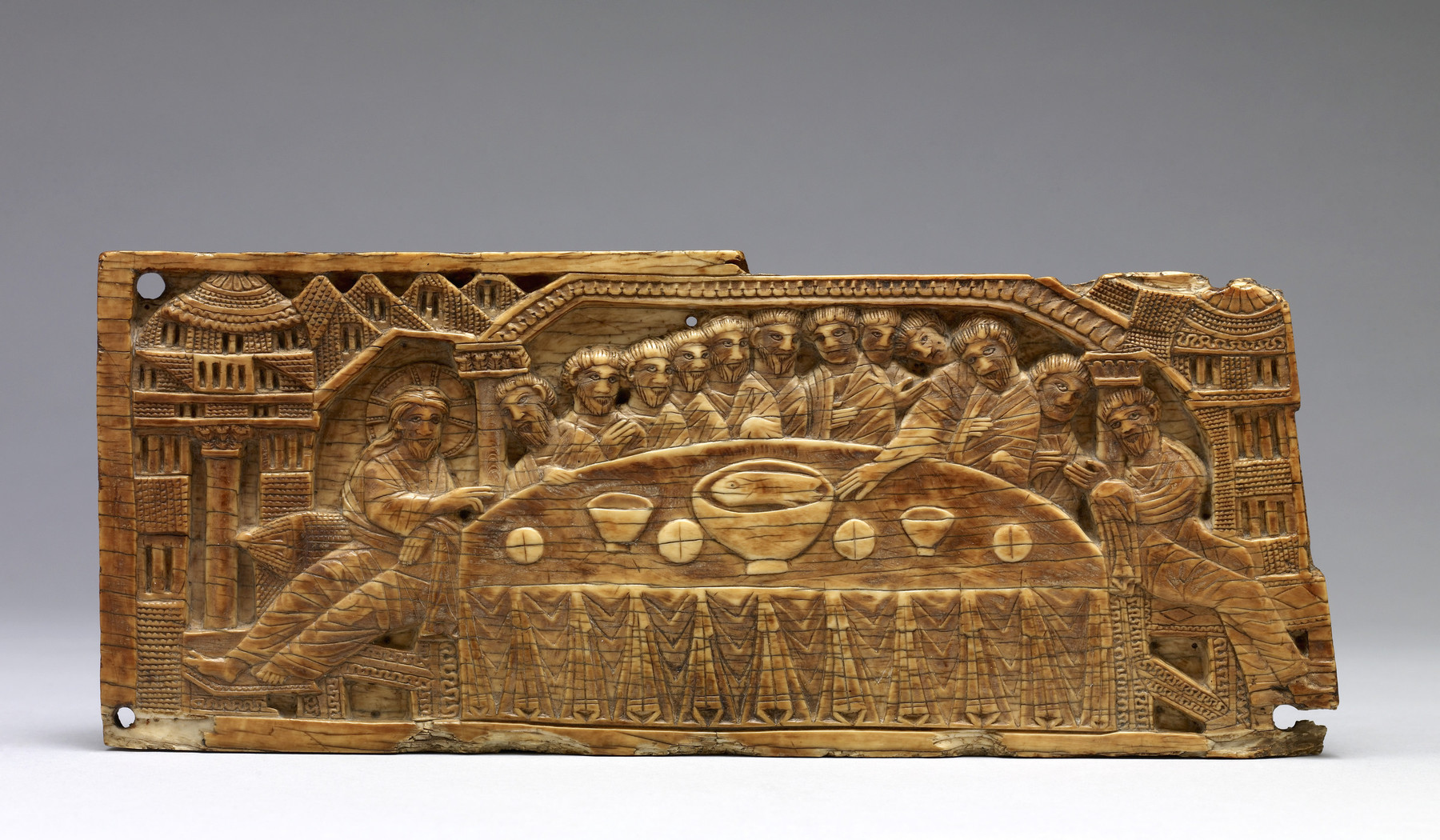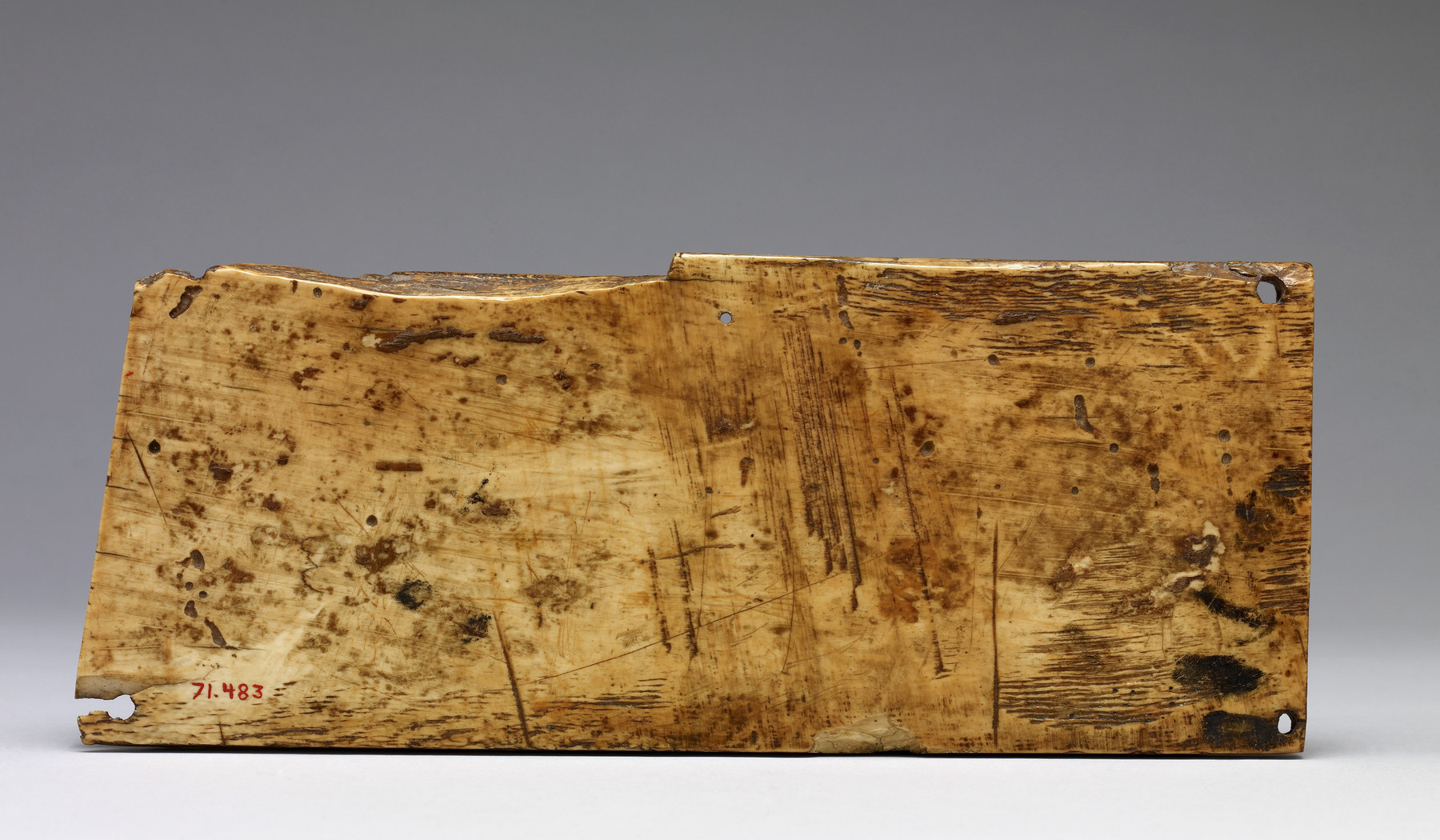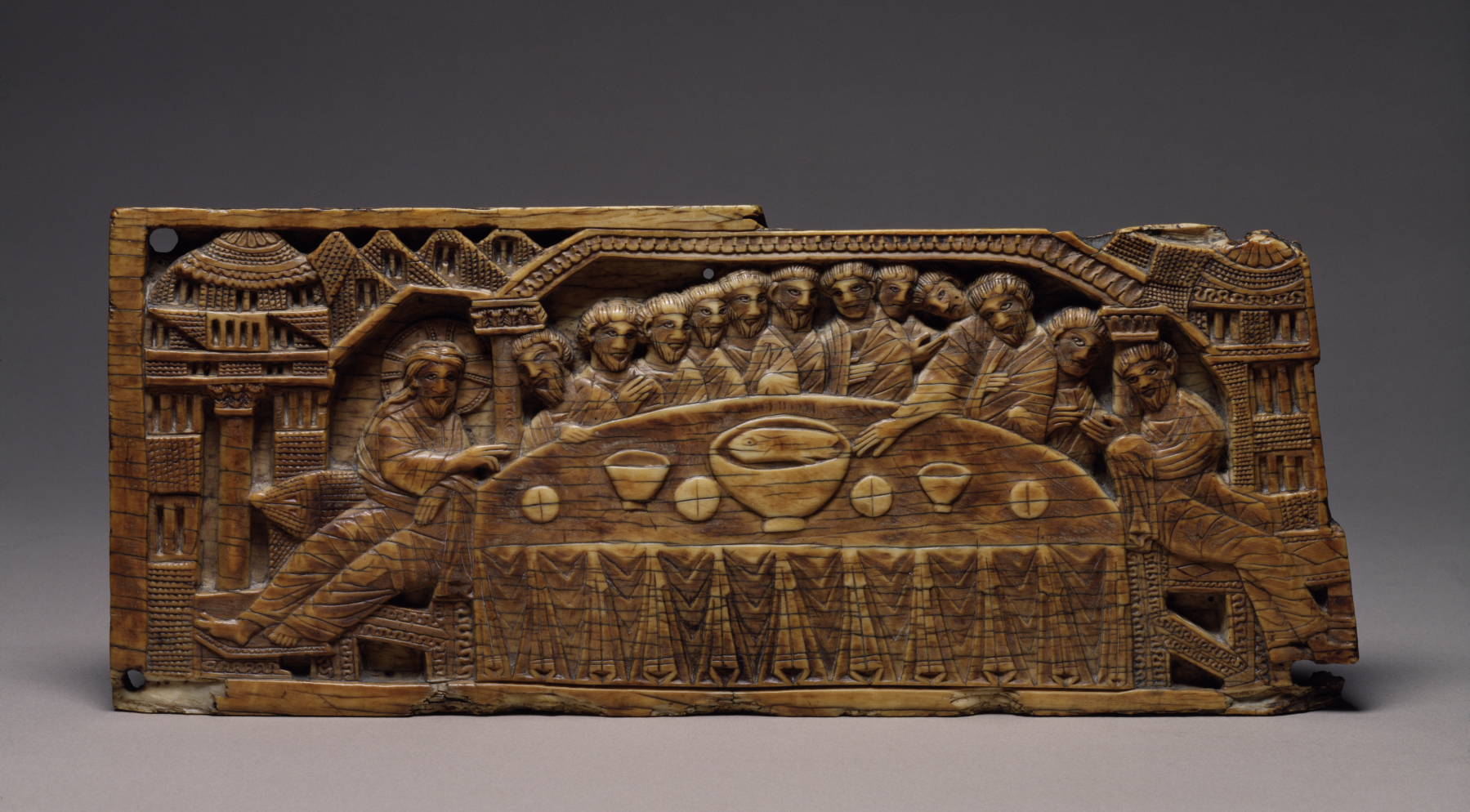The Last Supper
(Medieval Europe )
Christ and the apostles are gathered around a table framed by buildings and porticoes evocative of Jerusalem. Two of the apostles (right) try to prevent Judas from dipping his hand into the central bowl containing a fish, symbol of Christ himself. This ivory plaque, with an abstract, geometric style based on Byzantine models, is one of three from a larger ensemble of the Passion cycle, perhaps from an altar frontal. Two related plaques featuring the Washing of the Feet and the Prayer at the Mount of Olives are in the Museo Civico, Bologna.
Provenance
Provenance (from the French provenir, 'to come from/forth') is the chronology of the ownership, custody, or location of a historical object. Learn more about provenance at the Walters.
Count Gregoire Stroganoff (Grigorii Sergeevich Stroganov), Rome, prior to 1900; Kurt Cassirer, Rome, prior to 1925; Henry Walters, Baltimore, 1929, by purchase; Walters Art Museum, 1931, by bequest.
Exhibitions
| 1994 | Art of the Romanesque. University Art Gallery, South Bend. |
| 1940 | Arts of the Middle Ages. Museum of Fine Arts, Boston, Boston. |
Conservation
| Date | Description | Narrative |
|---|---|---|
| Examination | other |
Geographies
Italy (Place of Origin)
Measurements
4 3/16 x 10 1/4 x 7/16 in. (10.7 x 26 x 1.1 cm)
Credit Line
Acquired by Henry Walters, 1929
Location in Museum
Centre Street: Third Floor: Migration and Early Medieval Art
Accession Number
In libraries, galleries, museums, and archives, an accession number is a unique identifier assigned to each object in the collection.
In libraries, galleries, museums, and archives, an accession number is a unique identifier assigned to each object in the collection.
71.483






